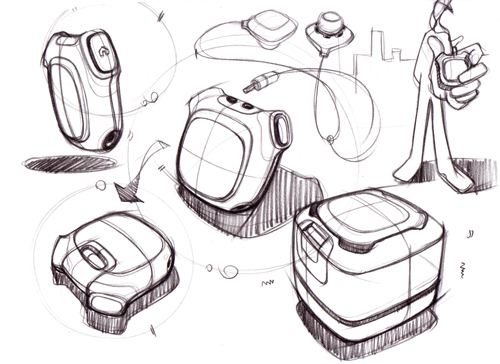This past spring, while taking Professor Eric Von Hippel's User-Centered Innovation course at MIT Sloan, my class was lucky enough to learn from a fascinating guest lecturer, Continuum CEO Harry West. One of the key lessons I took from Harry’s presentation was the critical importance of discovering contradictions or conflicts in a market. By studying customer behavior and the various ways they interact with products, one can identify if there is a mismatch or conflict between what industry has provided them and what they really want. This identification of latent needs through conflict recognition is a powerful concept that enabled Continuum, on behalf of Procter & Gamble, to discover the contradiction of people wanting their floor clean but not wanting to deal effort do it. This insight (along with the insight that people were spending more time cleaning their MOP than their floor) led to the design of the Swiffer, a widely successful home-cleaning product produced by P&G. Not surprisingly, it also tapped into the fact that people will give up some level of quality or performance if a product helps them save time or makes their life easier.
So, this brings me up to today where I had a great conversation with an entrepreneurial friend of mine from college, Josh Glicksman. Glixy’s idea, which we quickly hashed out together, taps into a set of conflicting insights in American society today: (1) Water is beneficial for your health and should be consumed throughout the day, and (2) Production and disposal of plastic bottles is harmful to the environment. Now, knee-jerk reaction would be that everyone should just use water bottles and fill them at the water fountains or taps, right? If filling up on tap water is such an easy solution, then why did the global rate of water consumption quadruple from 1990 to 2005? On top of that, it’s estimated that people will consume 174 billion liters of water in 2011, a 51% increase from 2006. (http://www.worldwatch.org/node/5475). Consider that, an industry worth billions that banks on the fact that people will pay for a product that they can get a slightly warmer and slight less quality version for free. Sounds like an opportunity…
What if we could promote the healthy habit of drinking water while simultaneously reducing consumption of plastic bottles? Is there is a way to capture market share between no-cost tap water drinkers and the high-cost bottled water drinkers? To capture the tap water market, you would need to provide water that is as convenient as tap water but at a higher quality (e.g. colder!). Meanwhile, you would have to provide the bottled water drinkers with a product at comparably high quality, much cheaper price, and a heavy helping of guilt for what their plastic bottles are doing to the environment. After all, why are we paying for the bottles if all we want is the water?
Thus, an innovative water service concept is born (nice work, Glixy). Consider a water kiosk set up on campuses that is hooked into the tap water system, but utilizes refrigeration and a reverse osmosis system (after wall, temperature may be the biggest factor in perceived water quality). Students carry a pre-purchased water bottle that features a barcode associated with their student ID. Students may have purchased a premium water bottle for a high cost (say $40) that gives them unlimited water or use a “pay as you go” system where the kiosk charges their student account a very small amount (e.g. $0.40) every time they fill up their bottle. You could even imagine the simple addition of flavor packets available at the kiosk at a small price (e.g. $0.10).

An interesting aspect of the ID-to-bottle connection is that it would tap into the growing trend of people tracking their life statistics (e.g. FitBit, every iPhone running app, calorie counters). This system would enable someone to track the water they are drinking, say on a mobile app, as they move around campus throughout the day, filling up at different kiosks. Perhaps you could even add incentives for people hitting certain individual or collective water-drinking goals. For people who are averse to paying for water, this service might actually be a worthy benefit.
With this system, we would add a measure of convenience and cost-savings to the water bottle drinkers (no more waiting in line in the store), add a level of quality to the tap water drinkers (cold filter water), and most importantly, offer a service that is mutually beneficial at the personal (health) and global (environment) levels, thus eliminating the contradiction in the market.









